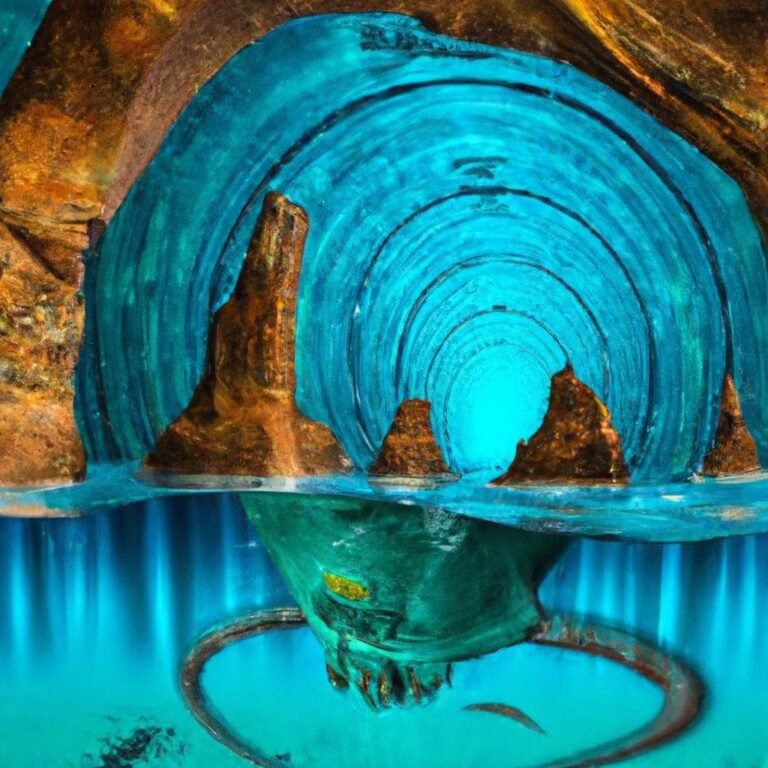As our planet’s oceans cover more than 70% of its surface, the mysteries of the deep blue remain largely uncharted and often elusive. Understanding marine ecosystems is not just an academic pursuit; it is vital for biodiversity conservation, climate research, and the sustainable use of ocean resources. In this context, the fusion of artificial intelligence (AI) and robotics is revolutionizing marine research, enabling scientists to explore underwater environments with unprecedented precision and efficiency. From autonomous underwater vehicles that capture real-time data in harsh conditions to AI algorithms that analyse vast amounts of oceanic information, these technological advancements are opening new frontiers in our quest to comprehend the intricate dynamics of marine life. Join us as we delve into the innovative applications of AI robotics in marine research, examining how they are transforming our understanding of the depths below and paving the way for a more sustainable future.
Table of Contents
- The Role of AI Robotics in Enhancing Marine Ecosystem Studies
- Innovative Technologies Driving Underwater Exploration
- Challenges and Solutions in Implementing AI Robotics in Marine Research
- Future Trends: The Next Frontier for AI in Ocean Conservation
- Wrapping Up
The Role of AI Robotics in Enhancing Marine Ecosystem Studies
Artificial Intelligence (AI) and robotics are revolutionizing the field of marine ecosystem studies, providing researchers with tools and methodologies that were previously unimaginable. These advanced technologies facilitate the collection of extensive data from marine environments, enabling scientists to analyse intricate ecological relationships, monitor biodiversity, and assess the health of aquatic habitats. By automating the process of data gathering, AI robotics minimize human error and labor costs, allowing for continuous monitoring of critical marine areas.
Key contributions of AI robotics in marine research include:
- Autonomous Underwater Vehicles (AUVs): These unmanned vehicles can navigate and gather data at depths that are often unreachable by human divers.
- Real-time Data Analysis: AI algorithms can process massive amounts of environmental data instantly, providing insights that inform conservation efforts.
- Habitat Mapping: Robotics equipped with imaging technology can create detailed maps of underwater ecosystems, revealing new insights into marine topography.
To illustrate the effectiveness of these technologies, a comparative analysis of traditional research methods versus AI robotics in marine studies showcases significant advantages:
| Research Method | Data Collection Speed | Human Intervention | Environmental Impact |
|---|---|---|---|
| Traditional Methods | Slow | High | Moderate |
| AI Robotics | Fast | Minimal | Low |
By harnessing these innovative technologies, researchers are now equipped to tackle the challenges posed by climate change, pollution, and habitat destruction, paving the way for smarter, more effective marine conservation strategies.
Innovative Technologies Driving Underwater Exploration
Within the complex realm of underwater exploration, innovative technologies are redefining how scientists traverse and interact with the depths of our oceans. Among the most groundbreaking advancements are autonomous underwater vehicles (AUVs) equipped with sophisticated AI algorithms that enhance navigation and data collection. These smart machines utilize real-time data analysis to adapt to changing environments, enabling researchers to explore previously inaccessible regions. As a result, they can efficiently map seafloor structures, monitor marine life, and collect vital ecological data with minimal human intervention.
Additionally, the integration of robotic systems combined with machine learning capabilities is further revolutionizing marine research. These tailored robotic solutions are employed for diverse applications, from conducting intricate underwater surveys to taking samples of water and sediment. Key features of these technologies include:
- High-resolution imaging: Advanced cameras provide detailed visuals for analysis.
- Environmental sensor integration: Monitoring tools gather data on temperature, salinity, and pH levels.
- Collaborative operation: Multiple robots can work together, sharing data in real time.
This synergy of AI and robotics empowers scientists to make informed decisions, leading to a deeper understanding of marine ecosystems and promoting sustainable practices for ocean conservation.
Challenges and Solutions in Implementing AI Robotics in Marine Research
The integration of AI robotics into marine research is not without its hurdles. Technical limitations persist, such as the challenge of achieving reliable data transmission in the deep-sea environment where traditional communication systems often falter. Additionally, environmental conditions, including extreme pressure and temperature fluctuations, can impair the functionality of robotic systems. Researchers often face difficulties in developing autonomous navigation systems that can adeptly handle unpredictable ocean currents and topographical complexities. Furthermore, the need for multi-disciplinary collaboration among technologists, marine biologists, and environmental scientists can lead to tensions over methodologies and goals, complicating project implementation.
To address these challenges, innovative solutions are continuously being explored. For instance, advancements in underwater communication technology are paving the way for enhanced data exchange, utilizing acoustic signals and even light-based systems for improved connectivity. Moreover, the development of modular robotics allows for adaptable designs that can withstand harsh marine conditions, promoting longevity and versatility in deployments. There is also a growing emphasis on collaborative frameworks that encourage shared goals and methodologies among experts from various fields, thereby reducing friction and fostering a more cohesive approach to marine research. Below is a brief overview of some key strategies being employed:
| Challenge | Solution |
|---|---|
| Data transmission issues | Underwater acoustic and optical communication systems |
| Harsh environmental conditions | Modular and resilient robotic designs |
| Interdisciplinary collaboration | Establishing cooperative frameworks and common objectives |
Future Trends: The Next Frontier for AI in Ocean Conservation
As we venture into new technological realms, the integration of artificial intelligence in ocean conservation is poised to transform marine research and environmental management. Emerging AI models are increasingly capable of processing vast datasets collected from various sources, including underwater drones and satellite imagery. These innovations enable researchers to monitor marine ecosystems with unprecedented precision. Key applications include:
- Automated Species Identification: Machine learning algorithms can analyse images and sounds from ocean environments to identify and track diverse marine species.
- Predictive Analytics: AI-driven models help predict changes in marine habitats, providing insights into the effects of climate change and human activity.
- Data-Driven Conservation Strategies: By understanding patterns and trends, conservation efforts can be targeted and optimized for maximum impact.
Looking ahead, the possibilities are endless as AI continues to evolve. With advancements in deep learning and neural networks, future robotics will not only enhance data collection but also facilitate real-time decision-making in marine conservation efforts. Utilizing AI in collaborative efforts with stakeholders and policymakers can significantly bolster the effectiveness of initiatives aimed at preserving fragile ocean ecosystems. Some possible future trends include:
| Trend | Description |
|---|---|
| Autonomous Exploration | Use of AI-powered underwater vehicles for uncharted ocean regions. |
| Smart Monitoring Systems | Integration of AI with IoT sensors for real-time health assessments of marine areas. |
| Enhanced Collaboration | Global partnerships leveraging AI data to coordinate conservation efforts. |
Wrapping Up
As we conclude our exploration into the fascinating intersection of AI robotics and marine research, it becomes clear that technology is not just a tool but a transformative force that is redefining our understanding of the oceanic world. From autonomous underwater vehicles collecting vital data in the depths of the sea to intelligent algorithms deciphering complex marine ecosystems, AI robotics is enhancing our capacity to monitor and preserve our oceans like never before.
The challenges our marine environments face—from climate change to pollution—demand innovative solutions that can only arise from interdisciplinary collaboration. The marriage of artificial intelligence and robotic technology offers exciting promise, paving the way for groundbreaking discoveries and more effective conservation strategies.
As researchers continue to push the boundaries of what these technologies can achieve, we find ourselves at the brink of a new era in marine exploration, one that emphasizes not only the importance of scientific inquiry but also the urgency of safeguarding our planet’s vital resources.
Stay tuned as we continue to investigate the latest advancements in this field and their implications for both science and society. Together, let’s embrace the wave of innovation, charting a course toward a more sustainable future for our oceans. Thank you for joining us on this journey into the depths—let’s keep the conversation going!





